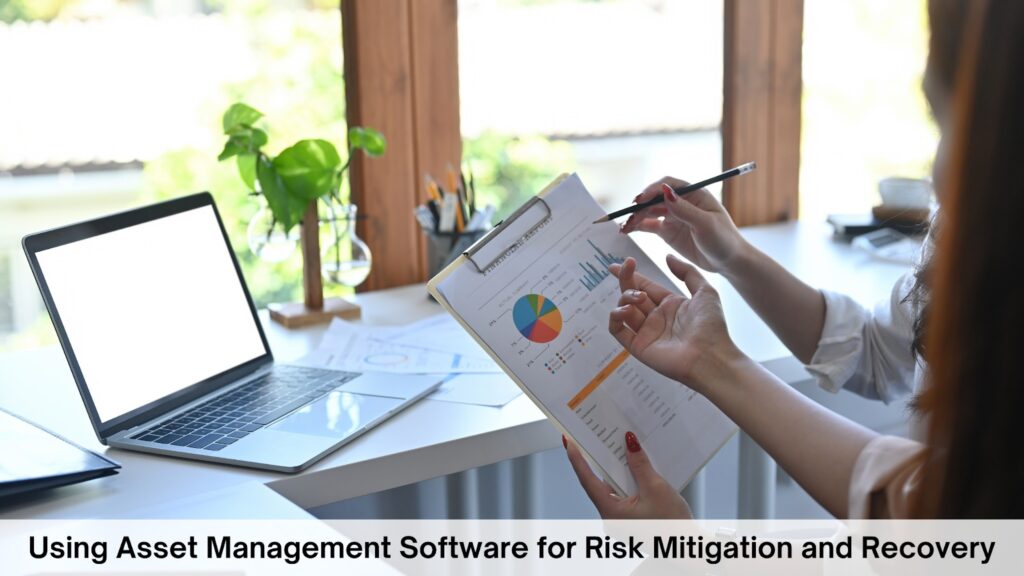Keeping track of your assets is more important than ever, not just for smooth operations, but also for reducing risks and recovering quickly when things go wrong. 43% of small businesses fail to track assets and inventory effectively, leading to costly mistakes, unplanned downtime, or even compliance issues. Many businesses struggle with not having a clear view of their assets, which can make risk management challenging.
Asset management software is a game-changer for companies looking to solve these problems and improve how they handle risks. In this blog, we’ll discuss how asset management software helps identify, reduce, and recover from risks—all while keeping operations running smoothly.
Identify Risks with Full Lifecycle Asset Tracking
One of the most powerful features of fixed asset management software is the ability to track assets throughout their entire lifecycle. By keeping detailed records from acquisition to disposal, businesses gain full visibility into their assets, making it easier to manage them effectively and reduce risks.
Key features, such as barcoding for accurate tracking, allow you to quickly identify and monitor assets, preventing risks associated with misplaced or untracked items. This ensures that every asset is accounted for and managed properly.
Another important feature is centralized data management, which keeps all asset information in one place. This helps you easily track asset health and status, so you can spot potential risks before they escalate. With a clear overview of your assets, you can make informed decisions about which ones need attention or replacement.
To find hidden risks, it’s very important to update your asset register regularly and blend it with your risk management system. It helps you catch problems early on, such as outdated or damaged assets, and take proactive action.
Conduct Accurate Risk Assessments with Business Impact Insights
Understanding the financial and operational impact of asset risks is key to building an effective risk mitigation strategy. With features like depreciation calculations and asset accounting, businesses can gain important insights into how asset wear and tear, or even failure, could harm their financial health.
Tools to Improve Risk Assessment:
- Depreciation and Asset Accounting: These functionalities calculate the current value of an asset and depict how its depreciation could impact financial reporting.
- Integration Capabilities: When you integrate asset management software with other business systems, such as ERP or finance, you ensure that data is consistent and up-to-date across all departments, thus enhancing the accuracy of risk assessments.
Actionable Strategy: Regularly review your assets. Assess their financial and operational impact to understand the potential risks. By integrating asset data with your financial systems, you can better understand how asset issues might affect profits and workflow, allowing you to make more informed decisions and minimize disruptions.
Prioritize Risks Using Maintenance and Asset Resilience Metrics
Different types of risks exist and some assets are more critical than others to the operations of the business. This means that effective management of risks requires knowing what assets are the most vulnerable, and which assets are most essential to your business. Prioritizing these would help you narrow down to focus on what matters.
Planned maintenance means the scheduling of routine maintenance, whereby assets are stretched further in terms of life while avoiding the possibility of sudden breakdowns. You need to track asset resilience, as some assets degrade faster than others. Monitoring their condition helps prevent potential issues.
For this, use predictive maintenance tools that assess the conditions of your assets. With that, you can plan precisely when to do the maintenance work. Rank your assets based on how critical they are and how resilient they are. This way, you will not waste your resources, and you will ensure you are not risking your most essential assets unnecessarily.
Mitigate Risks Through Centralized Asset Management
This means that centralizing asset data reduces risks because everything is accounted for and managed well. Asset management software will allow you to compile all the critical information regarding your assets, including:
- Asset Condition: By tracking the condition of your assets, you can catch potential issues before they become a bigger problem.
- Maintenance History: Keeping a record of maintenance allows you to be ahead of the necessary repairs and prevent unexpected failures.
- Warranties and Compliance: Manage warranties and compliance details so you are covered and avoid costly surprises.
All these features combine to make risk management more streamlined. For instance, spare parts management ensures that you do not experience production delays due to a lack of the necessary parts. Disposal tracking ensures that assets are retired and disposed of legally, reducing legal risks.
Actionable Strategy:
Take time to create a centralized plan for asset data, such as maintenance records, warranties, and asset conditions. This is a simple step that can make a big difference in keeping everything running smoothly and avoiding risks down the road.
Enhance Recovery Strategies with Software Integration and Reporting
Effective recovery strategies are just as important as risk mitigation. Asset management software that is integrated with other systems, such as disaster recovery, ERP, and backup systems, provides a good foundation for recovery. It ensures access to the latest asset data during a crisis, enabling more efficient decision-making.
Features such as CIP management enable tracking of assets that are in development to ensure they transition easily into operational use. It prevents delays and facilitates quick recovery whenever needed.
Also, very powerful reporting tools allow you to track risk and recovery efforts in real time. You can customize the tools to monitor the progress of asset recovery and prioritize assets accordingly, restoring them to operational status as quickly as possible. That way, your organization is well prepared to bounce back from unexpected challenges.
Asset Management Software Features for Risk Mitigation and Recovery
| Feature | Basic Edition | Professional Edition | Enterprise Edition |
| Full Lifecycle Asset Register | ✔️ | ✔️ | ✔️ |
| Barcoding for Asset Tracking | ✔️ | ✔️ | ✔️ |
| Depreciation & Asset Accounting | ✔️ | ✔️ | ✔️ |
| Planned Maintenance Scheduling | ✔️ | ✔️ | ✔️ |
| Spare Parts & Storage Management | ✔️ | ✔️ | ✔️ |
| Contract & Compliance Tracking | ❌ | ✔️ | ✔️ |
| Customizable Reporting & Workflows | ❌ | ✔️ | ✔️ |
| Integration Capabilities | ❌ | ✔️ | ✔️ |
Proactive Risk Mitigation for Future Success
Asset management software is important to reduce risk and enhance recovery efforts. Asset management software tracks assets throughout their entire lifecycle, identifies financial and operational impacts, and helps prioritize critical assets. The features like central data, predictive maintenance, and real-time reporting enable a proactive approach towards risks and quick recovery from setbacks. Thus, it becomes an imperative tool for successful businesses to have operational efficiency along with a good risk strategy.
FAQs on Addressing Common Concerns About Asset Management and Risk Mitigation
How does asset management software improve compliance and regulatory adherence?
Asset management software ensures that your assets are tracked and maintained in compliance with industry regulations. Features such as contract management and disposal tracking help ensure that assets are disposed of properly, reducing the risk of non-compliance.
What are the benefits of integrating asset management software with existing systems?
Integration streamlines workflows by allowing real-time data sharing between asset management and other systems like ERP and financial management tools. This improves data accuracy, reduces errors, and enhances risk analysis and recovery planning.
How can asset-tracking tools help with disaster recovery planning?
Asset tracking tools provide up-to-date records of all assets, ensuring that critical equipment and systems are accounted for during recovery efforts. The software’s integration capabilities allow for swift restoration of operations in the event of a disaster.

